You may have guessed that slow fibers take slow movements to train them. To appreciate the challenge of super slow consider the “Golden God” dance by the famous Soviet Chechen dancer Mahmoud Esambayev.
The Story of Mahmoud Esambayev
Born in a highlands village where every man and woman knew how to dance, Mahmoud started dancing at the age of seven and in his teens became a professional traveling with a troupe.
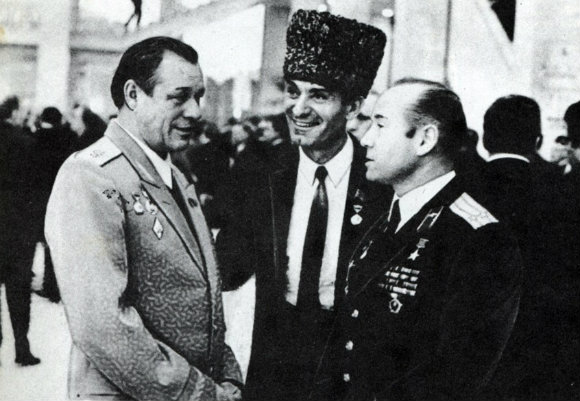
During World War II, Esambayev was wounded in the leg. The surgeon told him, “I have saved your leg but you will never be able to dance again.” This did not stop the young man from becoming one of the most accomplished and beloved dancers in the Soviet Union. Many of his dances could not be repeated by any other professional. Esambayev became especially famous for his series “Dances of the Peoples of the World” in which he was able to outperform the natives. The Indian dance “Golden God” is relevant for this article.
The dance started in a position known in ballet as a “full plié”— a rock bottom squat with the knees fully turned out, like a frog. The dancer took a minute and a half to rise up, symbolizing the sunrise. The dance demanded an extremely smooth ascent; little bells were attached to the dancer’s clothes and they were not supposed to ring. Six minutes of dance followed and then the performer went back down to a full plié squat in a minute in a half — the sunset. Indian consultants assured the Chechen that this dance demanded at least eight years of study. Esambayev mastered it in less than three weeks! (Behold the power of having one’s foundation of basics down.)
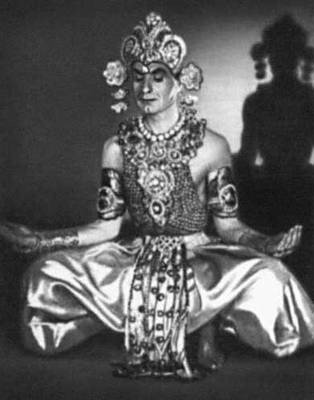
Slow Fiber Building Protocols
Fortunately for you, slow fiber hypertrophy training is less painful than that, a set should take only thirty to sixty seconds. Today I will outline one of slow fiber building protocols by Prof. Victor Selouyanov. As mentioned earlier, his methods have been used with great success by top Russian athletes from a variety of sports, from bicycle racing to judo; from soccer to full contact karate.
- Style of performance: super slow, no acceleration.
- Range of motion: partial that does not allow rest at any point.
- Set duration: 30-60 seconds to failure (both heavy and light days).
- Rest between sets of a given exercise: 5-10 minutes, active (walk, “fast and loose”). Other exercises may be done during that window.
- Resistance: 30-70% 1RM for the lower body and 10-40% 1RM for the upper body. No difference in resistance from heavy to light day.
- Weekly schedule: bodybuilding style split training; a heavy day and a light day per muscle group.
- Volume: 4-9 sets on heavy day; 1-3 sets on light day.
The resistance is chosen to hit failure within the specified time frame. The difference in percntage 1RM between the lower and upper body exercises is explained by a higher concentration of slow twitch (ST) fibers in the legs.
The purpose of going to failure is dual. One, to create a particular metabolic environment. Two, to cause psychological stress that promotes release of anabolic hormones. Unlike with heavier lifting, it is okay to go to failure. Since the exercise feels so different from a heavy lift, neural adaptations — learning failure — are not a problem. Safety is not much of an issue either as the weights are very light.
Besides, with the exception of the back squat, Prof. Selouyanov favors isolation bodybuilding exercises for ST hypertrophy. Among those he recommends to elite wrestlers are preacher curls and skull crushers! (See Easy Strength for explanations why these “sissy” moves are beneficial to experienced athletes, but not beginners.)
Selouyanov is a big fan of super slow partial back hypers. Reportedly, they were one of the key training secrets of Vasily Alexeev. The weightlifting great had back problems and was unable to do heavy clean pulls (deadlifts). So he would kick everyone out of the gym, lock the doors, and do slow partial back extensions over a pommel horse with a barbell weighing only 40-60kg. The rest, as they say, is history.
Bodyweight and partner exercises are also frequently used by elite Russian wrestlers coached in Selouyanov’s method. His protocol is only for training the muscle, not the movement, and it does not matter what type of resistance you are using, as long as you burn out your guns in the specified manner.
Contrary to what you might have read on the Internet, no one knows the exact mechanisms of turning on the muscle building machinery. Prof. Selouyanov developed the above protocol based on his own theory. In a nutshell, four conditions must be met for muscle hypertrophy:
- Presence of amino acids in the cell.
- An increased concentration of anabolic hormones in the blood as a result of psychological strain.
- An increased concentration of free creatine in the muscle fibers.
- An increased concentration of hydrogen ions (H+) in the muscle fibers.
The first condition is obvious. The second supports training to failure and making the muscles burn miserably. The third and fourth take some explanation.
Both free creatine and hydrogen ions unlock the muscle doors to anabolic hormones. The latter go in and turn on the genetic machinery responsible for protein synthesis. The thirty to sixty second window is defined by the goal of increasing these substances’ concentration. Free creatine is formed when muscle uses creatine phosphate as fuel and CP is usually used up in half a minute of hard work. Hydrogen ions are a byproduct of muscular contraction. Their concentration is maxed out at sixty seconds and at thirty seconds it reaches 65%. Now the set timing makes sense.
A super slow non-lockout style of exercise performance is dictated by the slow fibers’ ability to use oxygen and to rapidly recover. The blood vessels’ occlusion produced by this traditional bodybuilding technique cancels this ability.
How Selouyanov Differs From the Bodybuilders
You might ask, how does the Russian professor’s methodology differ from what bodybuilders have been doing for decades? Sure, he has precisely defined the loading parameters, but that is refinement, not innovation.
It is the radical five- to ten-minute rest period that gives Selouyanov’s method its unique edge. Bodybuilders, when doing constant tension, peak contraction, and super slow reps, always rush the rest periods, chasing max pump (pump is a manifestation of H+ accumulation, by the way). Selouyanov’s research has demonstrated that while hydrogen ions are needed for a short period of time to unlock the muscle cell to anabolic hormones, they destroy the muscle if allowed to stick around too long. If you remember your chemistry, you will realize that an ion is a charged particle, ready to reach and damage. Hence the extreme five- to ten-minute rest that makes all the difference.
Professor states that active rest — walking around, “fast and loose” drills — is far superior to passively sitting around. Movement allows H+ to circulate and get cleared more rapidly by multiple muscle groups.
But scientific theories are dime a dozen if they are not backed by practice. Whether Selouyanov’s is correct or not, his protocols have been used with extraordinary success by many elite Russian athletes from a variety of sports, and that is all that matters.
Read more:
Should You Train Your Slow Fibers?
How to Build Your Slow Fibers, Part II
How to Build Your Slow Fibers Part III
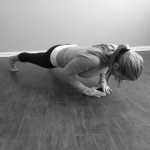
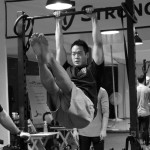
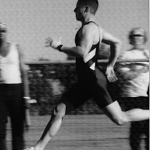
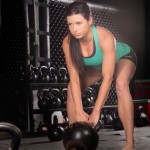

Hi! thanks for your insight to building oxidative muscle phenotype. Do you know how i ideally combine this approach to endurance type of training i. e. on the bike workouts. Do i have to reduce my sport specific training drastically hence i do stato-dynamic supersets? kind regards, Erik
How do stato-dynamic exercises (for slow twitch fibers) fit into regular strength training protocol? Traditional thinking is hat you need 48-72 hours of recovery after heavy strength training. How do you fit stato-dynamics with regular strength?
Are there more articles about this kind of training? I’ve tried it out now for a couple of weeks and the ease of which I now run and fight is astounding. I feel like I’ve doubled my endurance in both.
What I really meant is ‘ where is part 2’?
Gentlemen, Hard-Comrades, All-Others: Greetings to you one and all! I have known for the longest time, that this man (Pqvel Tsatsouline), is indeed, the ‘real-deal’! This is neither flattery nor ‘brown-nosing’; this is a simple acknowledgement, of excellence-in-plain-sight. I, have the blessing/curse, of being able to conceptualize in my mental-visualization, many concepts, that I didn’t/couldn’t create myself (i.e., the ability to recognize true-genius! Although I have taught all my life, (and indeed, still do-I homeschool my (2) two-children,and their test-scores, are far (almost -double!) above current national-standards, so that shows, I’m good at what I do. This is not to boast, merely to demonstrate, that I indeed can see and appreciate, what a top-notch’-teacher can do for his willing students! This, my friends, is what we have in Pavel Tsatsouline! Thanks , Pavel, even though I am starting my life-over with my children (in my fifties), I am very-pleased to know, that you are still there, to do the noble, too-often-unhearalded job, of guiding those simple-souls (us), whose ‘Grail’, is honest, cleanly-acquired: STRENGTH! Hail To YOU My Brothers! Hail to PAVEL! Mel: out.
Doug, thanks for the link!
Pavel, thanks for the article! I have printed off all three slow fiber articles so far. Looking forward to the next installments.
On kind of a related note, I usually close grippers about as fast as I possibly can. But a former coworker friend of mine closes them as slowly as possible. He chose to do it that way after seeing me close a #2 years ago very slowly. Well, about as slow as I could close it at the time, which was probably around 30 seconds from full open to fully closed in smooth tiny increments. Kind of like very short range paused “creeper” squeezes where the gripper is just shut fraction by fraction until it finally closes.
That was back in 2005 when he began his gripper training. I remember he was able to close the #1 on his first try. But that was moving the handles fast. His baseline for super slow gripper closes was a cheapie Walmart gripper. He started off training twice a week (the routine was his own design) using only the Walmart gripper for 3 single super slow closes. I think he said he rested 5 minutes between singles. We haven’t kept in contact much over the years, but he has way more willpower than I do, haha. The last time I saw him was about 2 years ago. He told me he had closed the #3 recently and was still doing the super slow closes with a gripper much easier (a Master, which is about the #2 level). He tested himself once a month to see if he was getting stronger on normal speed closes. I was pretty surprised that he had built up that much strength with the super slow closes though. I guess it just proves the worth of the slow twitch training even more. I have wondered about it since then.
Great article Pavel
For quads, do you prefer leg press or can one use leg extentions ? since it is so quad spesific.
What other good exercises are their to use for glutes?
How slow are we talking about in regards to the movement? like how many seconds eccentric and consentric?
Very good post Mr.Tsatsouline! This type of training fits me perfect for mountain bike cycling.
Hope we don’t wait much for the actual plan.
I would second this comment.
Strength training and practice of the skill (mountain biking) is not enough? Why?
Because in downhill mtb sometimes your skills are limited by the pain(burn) that you feel in the quads. Your legs have to do isometric work often and sometimes you have to pedal as hard as possible up to one minute. Then you know that you need more strength endurance than strength.Even if you are riding XC or Enduro mtb you will get more from this type training than maxing out.I’m speaking from experience.
wow pavel once again you know your stuff i like it , any new book pavel ?
Thanks, Noe, two books are in the works but neither is about this type of training. Next week’s blog will give you the plan.
When you draft the plans, will there be one that is only bodyweight?
The suspense is killing me. Can’t wait for the training plan. I’m interested in lower body hypertrophy that doesn’t involve barbell squats. Not getting much with S and S. (though I am in the upper back)
I see a new book coming out and yes, I’ll probably buy it.
Crazy!
https://www.youtube.com/watch?v=GmNws8A9-kw
Doug, this is the dancer and the dance, thanks for posting!
Pavel,
Would this be a stand alone program, or serve better in addition to something like S&S or RoP, either on separate days, on the same day, or in the same session, as “other exercises may be done during that window” would indicate?
Thank you.
Sam, either way—but combining requires one to be an experienced coach.
One option would be adding only the ST leg protocol to S&S.
Thanks Pavel! That makes sense, given the ballistic nature of the lower extremity training already present in S&S, and the correspondingly grind-y nature of Get Ups.
“A super slow non-lockout style of exercise performance is dictated by the slow fibers’ ability to use oxygen and to rapidly recover. The blood vessels’ occlusion produced by this traditional bodybuilding technique cancels this ability.”
From reading about the occlusion it sounds a lot like an isometric hold. Do I understand that an isometric hold (or Siff’s short range “oscillatory isometrics”) could also be used in this slow twitch protocol for work like isometric front lever progressions?
Greensoup, according to Prof. Selouyanov, you can even use pure isometrics—only he warns it is harder psychologically.
A strong person could experiment with the one-legged wall sit, the other leg folded across Indian style.
Pavel,
I hope this training method and its applications appear in a future book *wink wink/nudge nudge*.
Really enjoying these articles and can’t wait to see the training plan.
Aleks, you do not need a book for this, you have enough knowledge to put together a protocol from this blog.
Say hello to our friends Ronen and Benny.
Would this be applicable to using for grip work? e.g CoC grippers – low number (Trainer for someone who can close 1.5-2.0), never fully closing or opening, moving slow both directions.
David, I am certain it would—but I would close it all the way; locking out is avoided in most exercises because it enables rest. Grippers do not.
Dear Pavel:
You may have to expect a response from Ken Hutchins or Ellington Darden soon! Although their protocol was based upon Nautilus and MedX machines and not free weights, you bring up a glaring simularity. However, there was zero carryover strength benefits of Super Slow. Can you elaborate on the difference you have suggested?
Michael, I am not up to speed on Mssrs. Hutchins and Darden’s protocol.
Protocols by Prof. Selouyanov have resulted in significant strength increases in the powerlifts and improved performance in a variety of sports. Going slow is not enough; the rest of the loading parameters are of essence as well.
Pavel
Really interesting to read this article. We met back in Denmark 2006 on the RKC, I was working with Liverpool FC Academy at the time. During my time at Liverpool I worked with a consultant from Russia and we used a protocol based on Prof Selouyanov work. I won’t go into great detail but the results we had where dramatic on the players performance particularly in their sprint times.
Great to hear, Julian!
That is awesome Julian
Im a soccer player and i really want to focus on my acceleration for soccer and become like a rocket out of the blocks. Like Hazard.
Could you give me some details by mail or something?
Wow. That was great to read!! Very interesting stuff.
Pretty jazzed to see where this all goes. Not sure if I’ll implement it but it’s fascinating to learn about.
Pavel,
Enjoying this run of posts.
Does this to failure type training have any place if the goal is increased strength-endurance (i.e. increasing double digit chin up reps in a single set) or would a GTG type approach be a more effective method for this? Or a blend of both?
Carl, this protocol will increase strength endurance—but testing strength endurance with hard reps over 25 destroys mitochondria, according to Prof. Selouyanov.
Pavel, what is the difference between training to failure as described in article and testing that makes the later damaging for mitochondria?
Ted, the duration of the set and the rest between sets. Stopping set at 1min and resting for a long time prevents excessive H+ accumulation.
Fascinating stuff! Sometime this year I am going to try this.